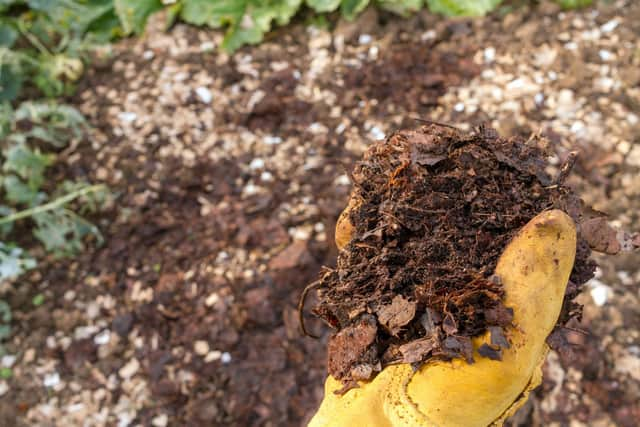Compromise needed on peat until a suitable alternative is available to commercial growers - Yorkshire Post Letters
It is interesting to read the comments from both your correspondents, Peter Auty, December 14, 2023, and M.Freeland, December 30, 2023, about their individual views about the future use of peat in the growing of plants both commercially and for amateur gardeners in the UK.
What has happened in the past, according to M Freeman 'has been tens of millions of tonnes of emissions within our lifetimes' is now history, but those plantings have contributed to the production of organic materials which is one of the elements of the production of peat if moisture is retained over a long period.
Advertisement
Hide AdAdvertisement
Hide AdI do have my concerns as a professional gardener of 40 years that peat has been a good medium to grow on young plants to get them established into healthy growing plants, especially those which prefer acidic conditions, for example Azaleas, Rhodes drums and Camellias.


As these shrubs grow they will shed their leaves and needles and will produce organic matter.
Many of the gardening programmes, like Gardeners World, and weekly garden magazines with the same authors including Monty Don have encouraged gardeners to rake up all leaves from lawns and shrubs borders. If some leaves were left then the actions of Nematodes or worms would help to enrich garden soils.
Leaf mould is nature's way of replenishing soil to grow both healthy cultivated plants and uncultivated plants or weeds.
Advertisement
Hide AdAdvertisement
Hide AdThe facts are that moss is growing, say at the quoted lower figure of 1mm per annum, but it is regenerating, and this will vary in growth due to the extent of poor drainage and shade from trees, granted not as fast as it is currently being used.
There is hope as farmers are putting low productive land which is poorly drained into wetlands wildlife areas.
I am encouraged that the government has set targets for planting 30 million trees by 2030, and whilst these trees are growing they are producing increasing amounts of leaf litter which decomposes and will enrich a poor soil.
These days when Highways England and councils like the one where I live, East Riding of Yorkshire, undertake major road widening schemes, for example, the A165 between the Humber Bridge and Beverley, an environmental impact assessment will identify the risks and put into the design process by utilising subsoil to create 'surface water catchment lagoons' which are man- made wetland areas and in time the mosses formed will decompose and peat will grow with less impact on the local wildlife.
Advertisement
Hide AdAdvertisement
Hide AdHas M.Freeland considered the effects this has on British growers of ornamental nursery stock plants?
From growers of seasonal summer and winter flowering annuals, perennials, shrubs and trees, when the forthcoming ban of peat is giving them major headaches as a growing medium to produce high quality plants for sale is very difficult as there is no quality alternative compost available.
These compost are not holding fertiliser nutrients and water retention is very poor resulting in more leaching of chemicals into the sewage system or ground water into rivers and the sea. Therefore more nutrient top-ups and watering is required, pushing up production cost for UK growers.
Some local small growers based in Yorkshire may be forced out of business, and larger growers of trees like Barcham in Ely and James Coles of Leicester will become less competitive and more shrubs and trees will be bought from countries like Italy and the Netherlands where they are still growing in peat based compost.
Advertisement
Hide AdAdvertisement
Hide AdThis will affect local economies in the supply chains in Cambridgeshire and Leicestershire and less taxes given to the exchequer.
There needs to be a compromise with the long term usage of peat until a suitable alternative growing medium is available to commercial growers.
